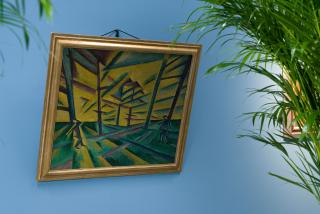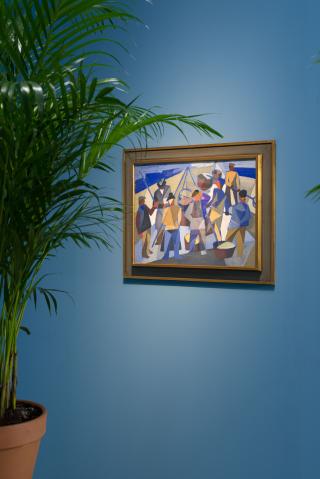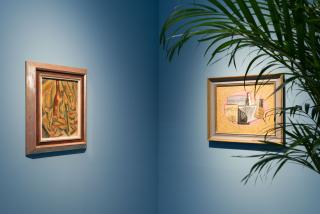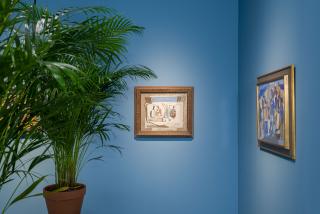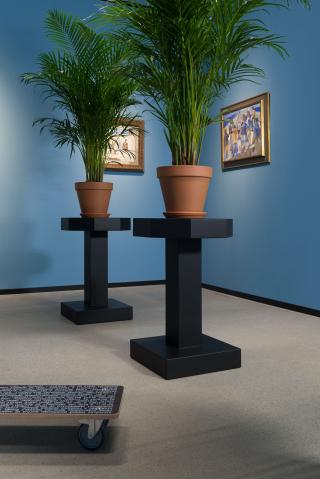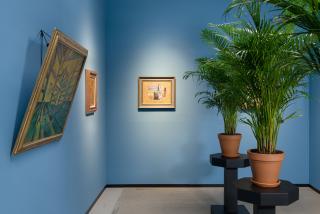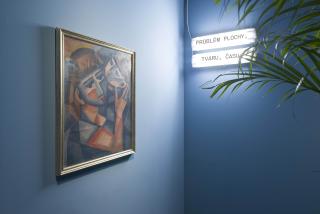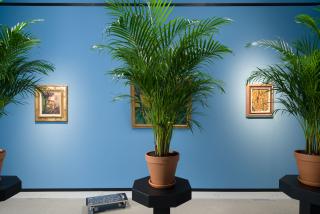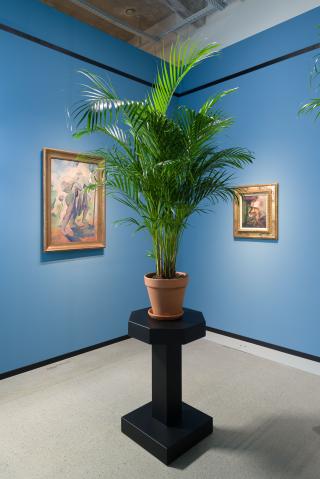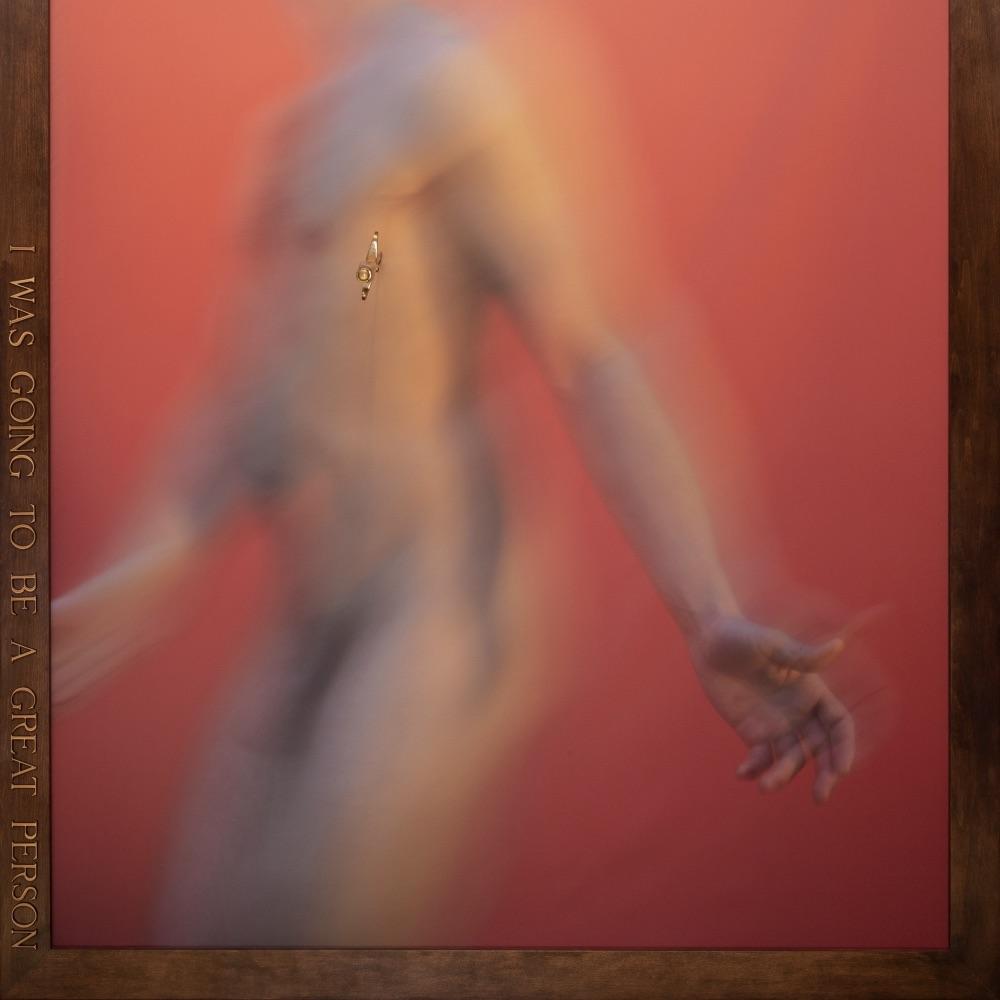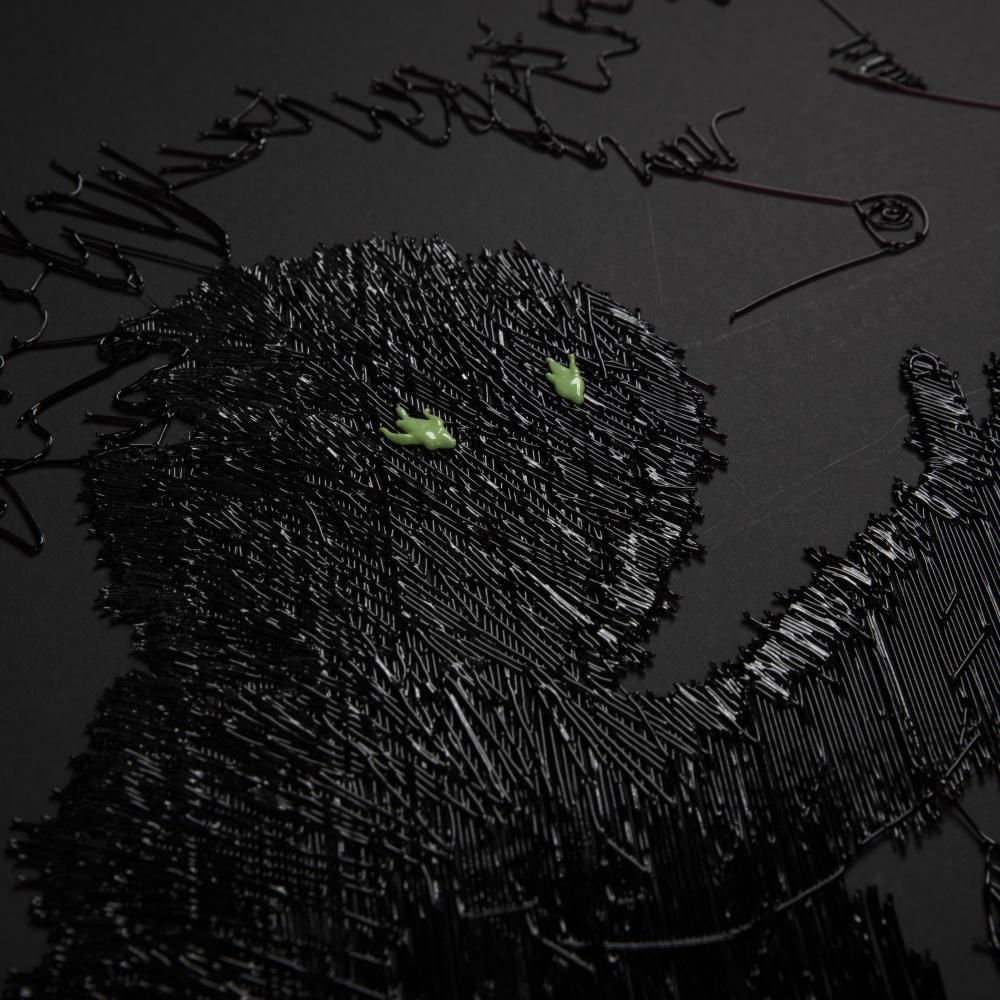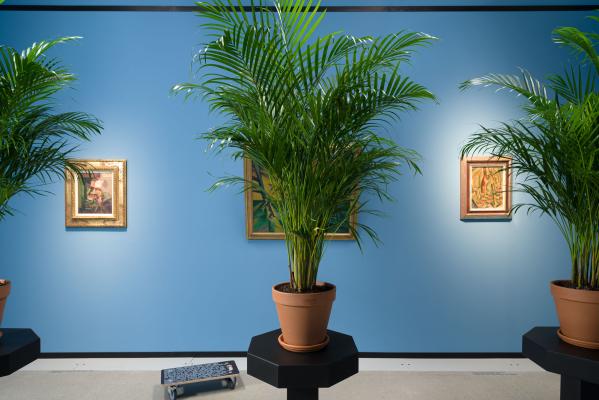
"It was Cubism that imposed the object on the world" - Fernand Léger
A narrow passage leading from the exhibition space dedicated to the celebration of human life brings visitors to Signal III to an imaginary crossroads. If they decide to turn left, they will have the opportunity to enter an intimate blue salon, complete with greenery, which is modest in size but far from modest in its content, which is devoted to issues of surface, shape and time. The eight paintings on display here draw them into a world of abstracted crystalline shapes and double or triple levels of simultaneous thought, aspects so characteristic of the artistic movement called Cubism, which was born around 1906 in Paris thanks to the Frenchman Georges Braque and the Spaniard Pablo Picasso.
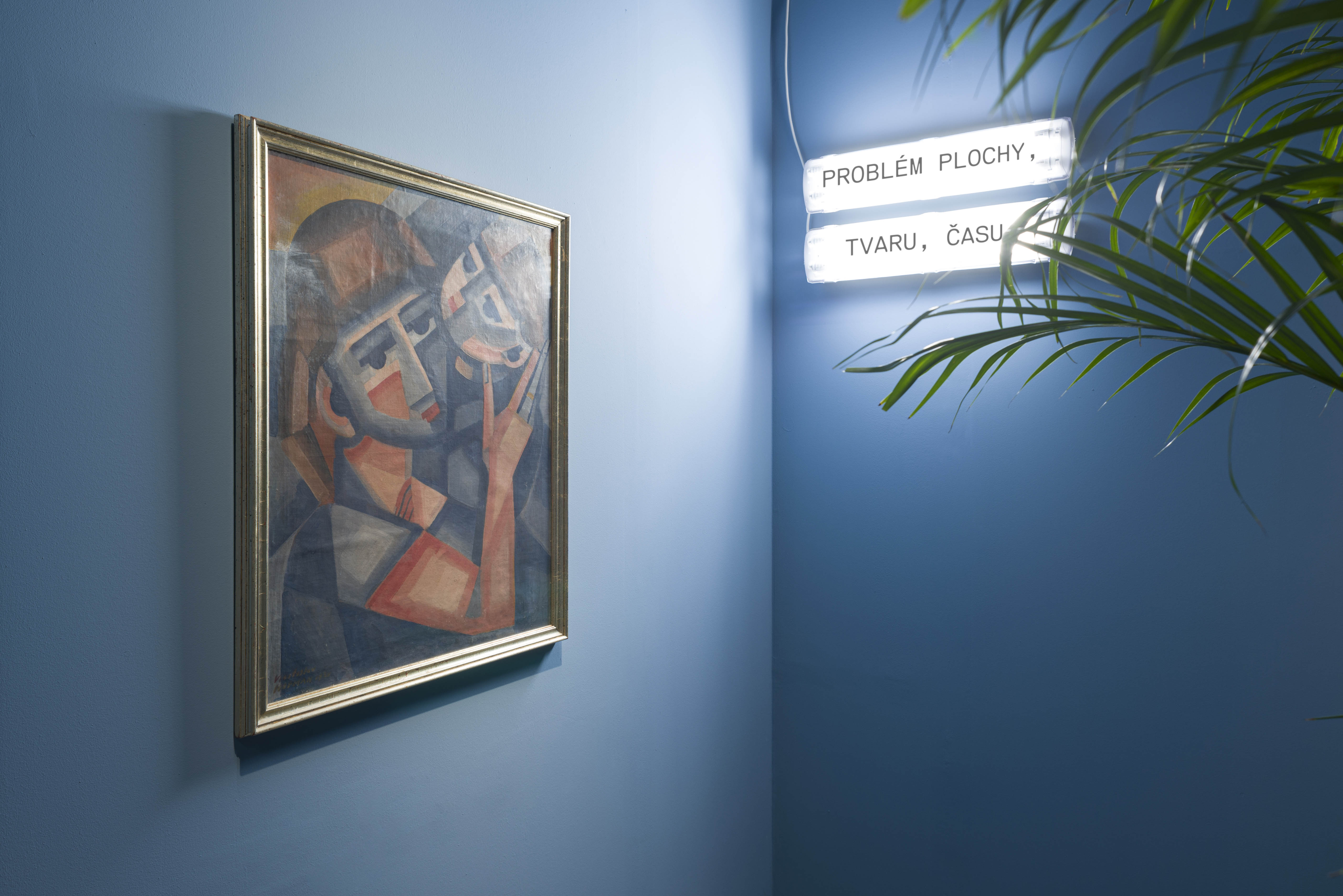
The strong contacts of domestic artists with the progressive milieu of Montmartre in Paris at the beginning of the twentieth century thus gave the opportunity for the penetration of innovative avant-garde tendencies into the domestic artistic production, which was already overwhelmed by the Viennese Art Nouveau decorativism and historicism promoted in the academic grounds of the then Austro-Hungarian Empire. The art historian Vincenc Kramář was a key figure in popularising Cubism in our waters. In addition to supporting young artists, Kramář managed to acquire cubist works by Pablo Picasso and other foreign artists between 1910 and 1914. The desire for a revolt aimed at radical liberation of artistic expression also led to the association of leading representatives striving for new art in associations such as Osma, Mánes or the Skupina výtvarných umělců (1911-1914), which were most tangibly affected by Cubist principles. Its members included, among others, painters Emil Filla, Josef Čapek, Vincenc Beneš, Antonín Procházka, sculptor Otto Gutfreund and architects Vlastislav Hofman, Josef Chochol, Pavel Janák and Josef Gočár.
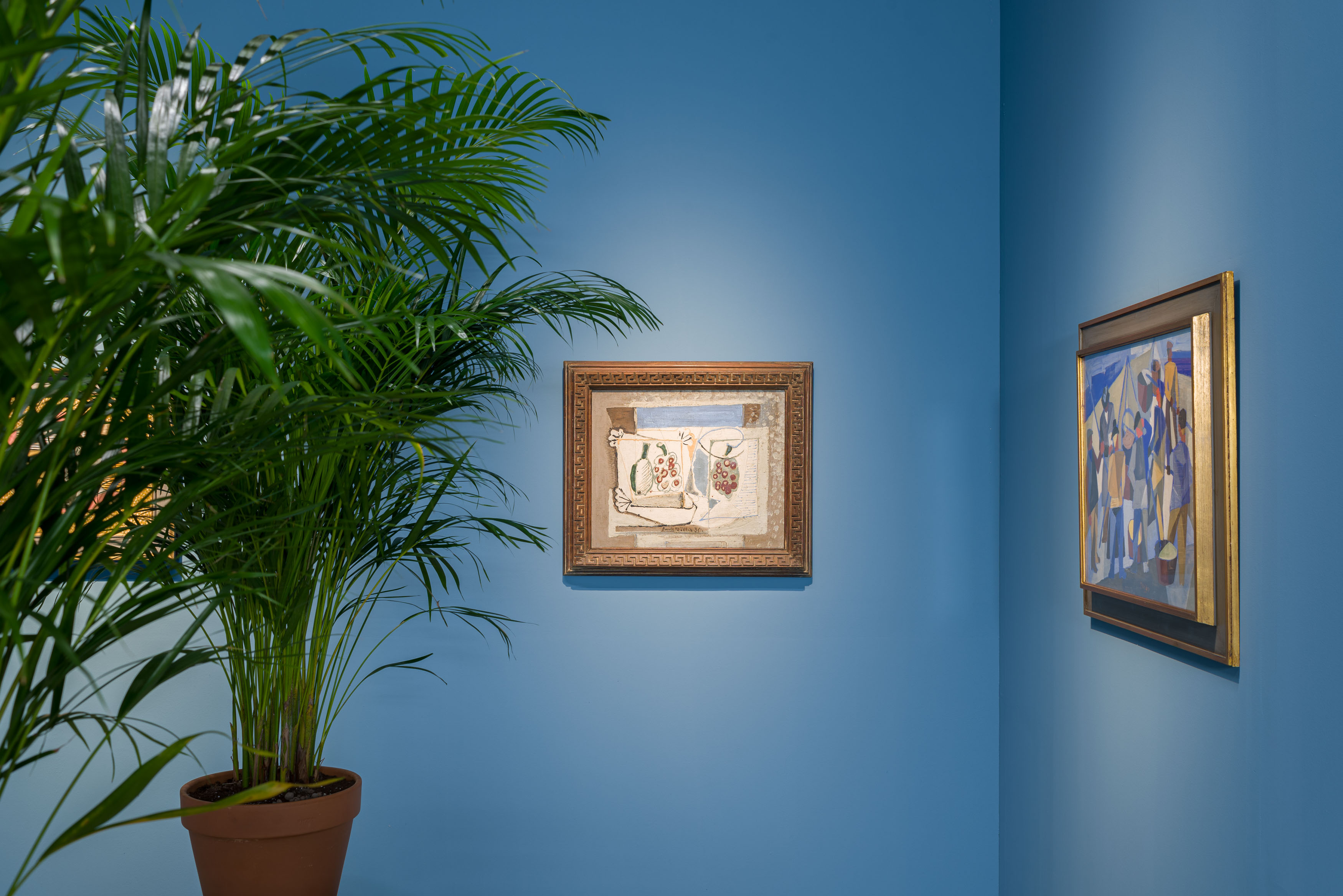
In the blue salon, entitled "The Problem of Surface, Shape, Time", visitors will find paintings by Vlastislav Hofman, Jaroslav Kral, Antonín Procházka, Otakar Kubín, Vincenc Beneš, Emil Filla and Pravoslav Kotík. Among foreign artists, there are still lifes by the Italian painter Gino Severini, who is especially famous in the world as a representative of Futurism.
By Pavlína Jindrová / Telegraph Gallery
Photo: Matěj Doležel
